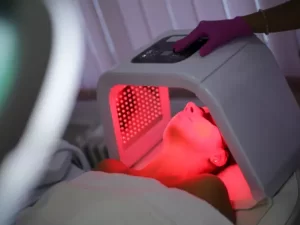Biohacking is transforming the way we approach health and wellness. At its core, biohacking involves making lifestyle or technological changes to improve physical and mental performance. For many, this means leveraging cutting-edge gadgets that offer real-time data and actionable insights to fine-tune their body and mind. From optimising sleep to enhancing nutrition, biohacking gadgets promise not just to help you feel better but to unlock your full potential. But which devices stand out, and how can they help you?
Gadgets for Sleep Optimization
Sleep quality profoundly affects health and performance, and biohackers have turned their attention to gadgets that improve rest. Devices like smart sleep trackers, such as the Oura Ring, monitor your sleep patterns with precision. By tracking REM cycles, heart rate variability, and overall sleep duration, they deliver personalised feedback to optimise your nightly routine. Additionally, products like the ChiliPAD or Eight Sleep’s Pod use temperature regulation to help create the perfect sleeping environment. These tools simplify the process of achieving deep, restorative sleep, whether it’s cooling you down on hot nights or warming you up in the winter.
Alarm systems are also getting smarter. Sunrise alarm clocks gradually simulate natural light, waking you up gently rather than jarring your body with a shrill sound that disrupts your rest. Combined, these tools aim to make sleep more effective and improve your circadian rhythm—a key factor in biohacking for better health.
Gadgets for Fitness and Performance Enhancement
Wearable technology has become a mainstay for fitness enthusiasts, and for good reason. Take devices like WHOOP or Fitbit, for instance; they go beyond counting steps to deliver insights into workout intensity, recovery periods, and overall strain. For those who want more, wearables such as the Garmin Forerunner or Polar Grit X cater to endurance athletes, offering advanced metrics like VO₂ max levels, power output, and altitude acclimation.
Recovery-focused gadgets are also gaining traction. Percussive therapy devices, like the Theragun or Hypervolt, help alleviate muscle soreness and speed recovery processes. Add to that tools like the EMS (Electrical Muscle Stimulation) suits by brands like PowerDot, which stimulate muscles for enhanced results during workouts, and you have a solid arsenal of devices ready to amplify your physical performance. With biohacking gadgets like these, tailoring your training regimen to suit your personal goals has never been easier.
Gadgets for Mental Clarity and Focus
Mental clarity and cognitive performance are central to biohacking efforts, especially for professionals and students alike. Gadgets designed for brain optimisation have surged in popularity, with devices like the Muse headband leading the charge. The Muse headband guides users through meditation sessions by using EEG technology to provide real-time feedback. This helps users calm their minds, improve focus, and even achieve a clearer mental state in less time.
For those looking to boost their productivity, tools like the Apollo Neuro wearable utilise vibration patterns to promote calm and focus. Similarly, smart glasses like those made by IRIS or blue-light-blocking glasses aim to reduce eye strain and boost concentration during long sessions in front of a computer screen.
While enhancing focus, many of these tools also target stress management, which is crucial for maintaining long-term mental health. Practices like mindfulness, supported by tech, not only enhance productivity but are also key to a sustainable peak-performance lifestyle.
Gadgets for Nutrition and Gut Health
Biohacking extends beyond physical and mental fitness to include the incredible impact of nutrition and gut health. Devices like the Lumen metabolic tracker offer a unique way to monitor your body’s energy use by analysing your breath. This provides insights into whether you’re burning carbs or fats and allows you to tailor your diet accordingly to achieve specific health goals.
Likewise, microbiome testing kits such as Viome empower users to understand their gut’s health at a deep level. By analysing the bacteria present in your digestive system, these gadgets can recommend dietary changes or specific supplements to optimise digestion and nutrient absorption. Kitchen gadgets like smart scales and connected nutrition trackers further assist by monitoring daily calorie and nutrient intake seamlessly.
With more accurate data and tailored solutions, biohackers can take control of their diet in ways that were unimaginable until now. The result? Enhanced energy levels, reduced inflammation, and an optimised gut-brain connection.
Safety and Ethical Considerations
While biohacking gadgets promise exciting possibilities, safety and ethics remain important concerns. Not all health devices and trackers are created equal, and it’s critical to choose products that have undergone rigorous testing and certification. Regulatory agencies like the FDA and certification bodies can serve as helpful standards.
On the ethical front, issues like data privacy come to the forefront. Many devices collect sensitive health information, which raises the question of how this data is stored, shared, and protected. Companies must be transparent about their data policies. For users, understanding and mitigating these risks is essential to ensure that the benefits of biohacking far outweigh any potential downsides.
It’s also important to acknowledge that some forms of biohacking blur ethical boundaries. For example, while devices like nootropic delivery systems show promise, their long-term effects remain largely unstudied. Balancing innovation with responsibility is essential as the industry grows.
Future Trends in Biohacking Gadgets
The future of biohacking seems poised for even greater leaps in innovation. The integration of artificial intelligence into wearable devices will likely result in even more personalised recommendations, seamlessly adapting to an individual’s changing needs. For instance, we’re starting to see prototypes of wearable patches that analyse hydration levels or provide continuous glucose monitoring without invasive needles.
Another trend to watch is the boom in virtual reality (VR) and augmented reality (AR) applications with biohacking functionality. Imagine using VR technology to enhance meditation practices or simulate different environments for stress relief. Similarly, nanotechnology holds immense potential for delivering precise health interventions right where the body needs them most.
Furthermore, as biohacking becomes more mainstream, the accessibility of these gadgets will likely improve. What was once expensive or reserved for elite athletes may soon be available to the average health enthusiast.
FAQs
1. What are the risks of biohacking gadgets?
Some risks include data privacy concerns, overreliance on technology, and potential misuse of unregulated devices. It’s always wise to do thorough research and consult experts when needed.
2. Do I need to be a tech-savvy person to use biohacking gadgets?
Not at all! Most devices are designed with user-friendly interfaces and step-by-step guides to make them accessible to everyone.
3. Are biohacking gadgets worth the investment?
If you’re serious about optimising your health and performance, they can be incredibly worthwhile. Consider which areas of your health you want to focus on and start with one or two gadgets.
4. What’s the best gadget to start with?
This depends on your goals. For overall health, a fitness tracker or sleep monitor might be the best starting point. For specific goals, such as gut health or stress management, opt for specialised devices like a microbiome kit or stress relief wearables.



